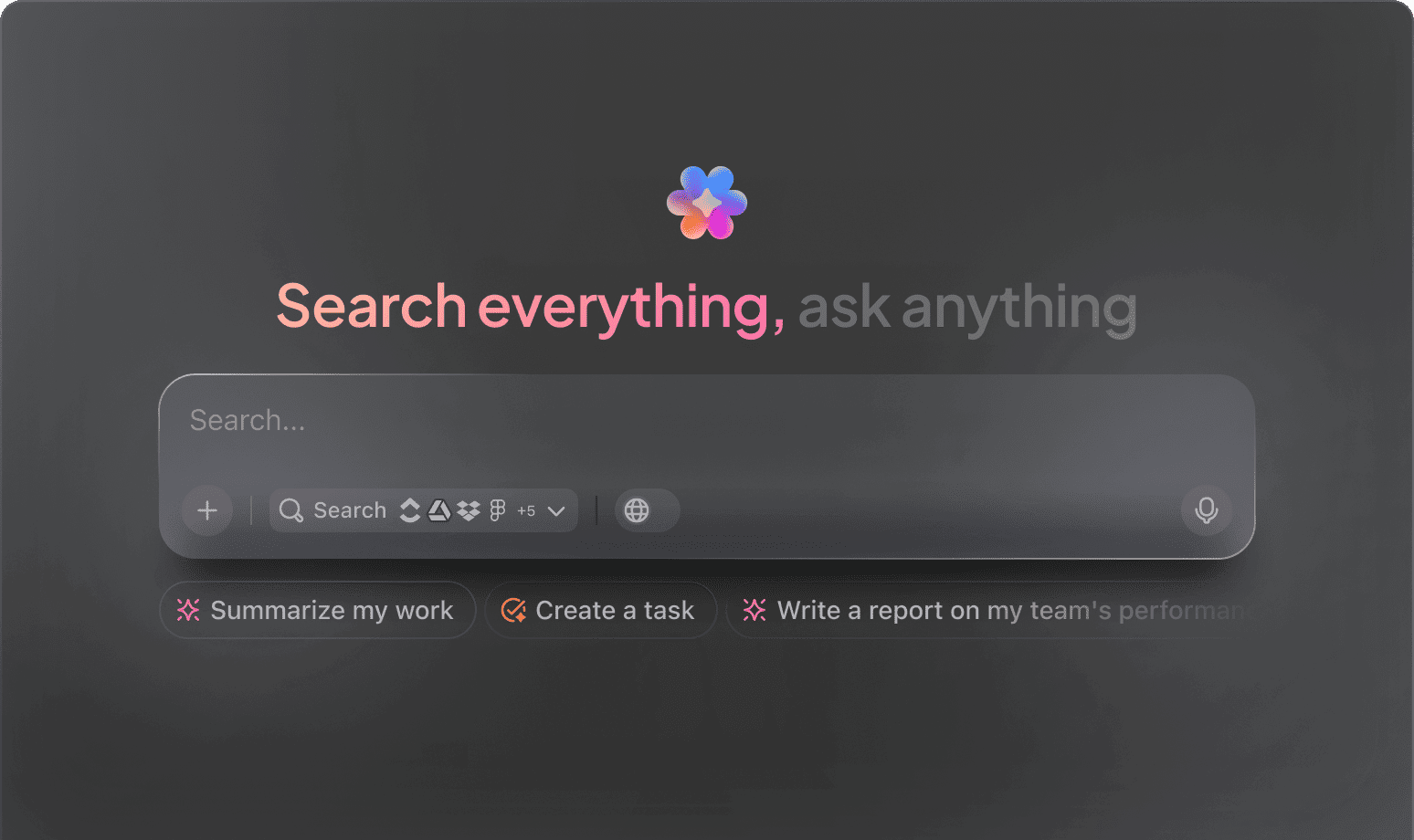AI Status Report Assistant
Top AI Prompts for Status Reports with ClickUp Brain
Craft clear updates, simplify reporting, and keep your team aligned effortlessly using ClickUp Brain’s intelligent prompts.
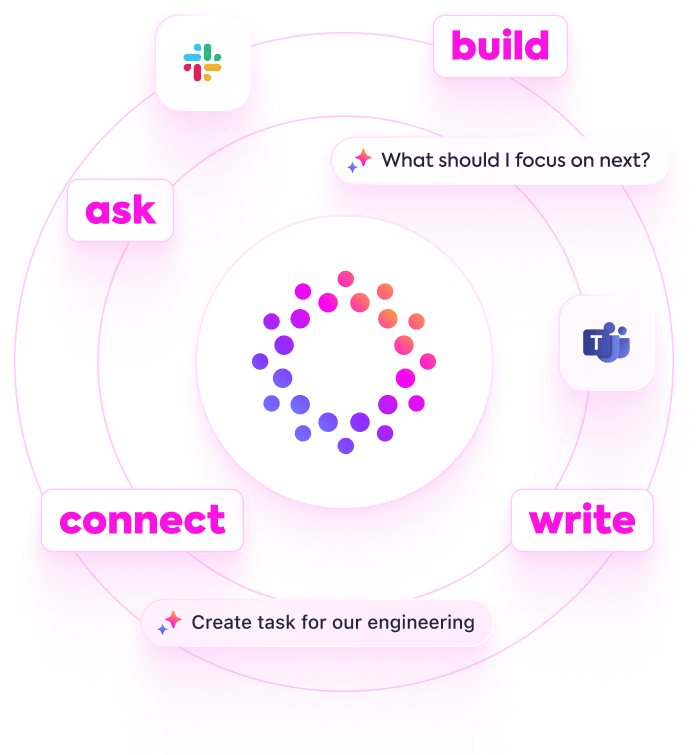
Trusted by the world’s leading businesses
AI Empowering Status Reports
Harnessing AI Prompts to Revolutionize Status Reporting in ClickUp Brain
Keeping your team aligned goes beyond just sharing updates—it's about delivering clarity and actionable insights.
From gathering progress data to highlighting blockers and planning next steps, status reporting requires juggling multiple inputs and tight deadlines. AI prompts are now a vital part of this process.
Teams leverage AI to:
- Quickly extract key achievements and challenges from raw updates
- Generate concise, clear status summaries with minimal effort
- Identify risks and dependencies automatically
- Transform scattered notes into structured reports, action items, or follow-up tasks
Integrated into familiar environments like docs, dashboards, and task boards, AI in tools such as ClickUp Brain goes beyond assistance—it actively shapes your updates into focused, impactful communication.
Comparing ClickUp Brain with Conventional AI
Why ClickUp Brain Stands Out
ClickUp Brain integrates seamlessly, understands your context deeply, and empowers you to act faster—cutting down on needless explanations.
Conventional AI Solutions
- Constantly switching apps to collect background info
- Repeating your objectives with every query
- Receiving vague, irrelevant feedback
- Hunting through numerous platforms for a single document
- Interacting with AI that only processes input passively
- Manually toggling between different AI engines
- Merely another add-on in your browser
ClickUp Brain
- Instantly accesses your projects, notes, and team communications
- Tracks your progress and priorities over time
- Provides detailed, practical insights
- Searches across all your integrated tools effortlessly
- Supports hands-free commands with Talk to Text
- Automatically selects the optimal AI model: GPT, Claude, Gemini
- Dedicated Mac & Windows app designed for efficiency
Prompts for Status Reporting
15 Effective AI Prompts for Status Reports (Proven with ClickUp Brain)
Simplify status updates—track progress, highlight blockers, and keep teams aligned effortlessly.

Identify 5 key progress highlights from the ‘Sprint 12 Update’ document.
Use Case: Accelerates report creation by extracting main achievements.
ClickUp Brain Behaviour: Analyzes linked documents to pull out significant milestones and accomplishments.

What are the current blockers reported in the ‘Team Roadblock Log’ for Q2 projects?
Use Case: Helps managers quickly spot and address obstacles.
ClickUp Brain Behaviour: Aggregates and summarizes issues documented in internal tracking files.

Draft a concise status summary for the ‘Marketing Campaign Launch’ using notes from the latest team meeting.
Use Case: Ensures consistent communication by unifying scattered updates.
ClickUp Brain Behaviour: Extracts relevant points from meeting notes to generate a clear, formatted summary.

Compare planned vs actual progress for the ‘Website Redesign’ project using the ‘Project Timeline’ doc.
Use Case: Supports performance review without manual data compilation.
ClickUp Brain Behaviour: Pulls timeline data and summarizes discrepancies in an easy-to-understand format.

List top three risks identified in the ‘Product Release Risk Assessment’ document.
Use Case: Highlights critical concerns for proactive mitigation.
ClickUp Brain Behavior: Scans risk logs and extracts the most pressing issues with context.

Generate a checklist for weekly status report submissions based on company guidelines.
Use Case: Standardizes reporting to improve clarity and completeness.
ClickUp Brain Behavior: Transforms policy documents into actionable checklist items for teams.

Summarize recent feedback trends from the ‘Client Satisfaction Survey Q1’ for inclusion in status reports.
Use Case: Informs teams about client perspectives to guide priorities.
ClickUp Brain Behavior: Identifies recurring themes and sentiments from survey data.

From the ‘Development Team Weekly Notes’, extract key accomplishments and pending tasks.
Use Case: Facilitates quick update generation without sifting through lengthy notes.
ClickUp Brain Behavior: Highlights completed work and outstanding items for clear reporting.

Write engaging status update copy for the project dashboard using the tone guidelines in ‘TeamVoice.pdf’.
Use Case: Enhances report readability and team engagement.
ClickUp Brain Behavior: Adapts writing style from tone references to craft concise, motivating text.

Summarize changes in reporting requirements from the latest company policy update.
Use Case: Keeps teams informed about compliance and format adjustments.
ClickUp Brain Behavior: Extracts key points from policy documents and highlights actionable changes.

Generate guidelines for status report formatting based on regional office standards.
Use Case: Ensures consistency across diverse teams and locations.
ClickUp Brain Behavior: Compiles formatting rules and best practices from internal documents.

Create a checklist for project closure status reports referencing the ‘Project Completion Criteria’ folder.
Use Case: Helps teams confirm all deliverables and tasks are finalized.
ClickUp Brain Behavior: Identifies closure requirements and structures them into a clear task list.

Compare reporting frequency and detail levels across departments using internal communication logs.
Use Case: Supports standardization efforts and identifies best practices.
ClickUp Brain Behavior: Summarizes differences and similarities in reporting habits.

Summarize feedback on status report usability from recent employee surveys.
Use Case: Drives improvements to reporting tools and templates.
ClickUp Brain Behavior: Extracts common suggestions and pain points from survey responses.

List key action items and deadlines from the ‘Executive Status Review’ meeting notes.
Use Case: Ensures follow-up tasks are clearly communicated and tracked.
ClickUp Brain Behavior: Pulls out assigned tasks and due dates for inclusion in reports and reminders.
Elevate Your Status Reports with ClickUp Brain
Cut down on revisions, unify your team’s insights, and produce clearer, more impactful reports using AI-driven workflows.





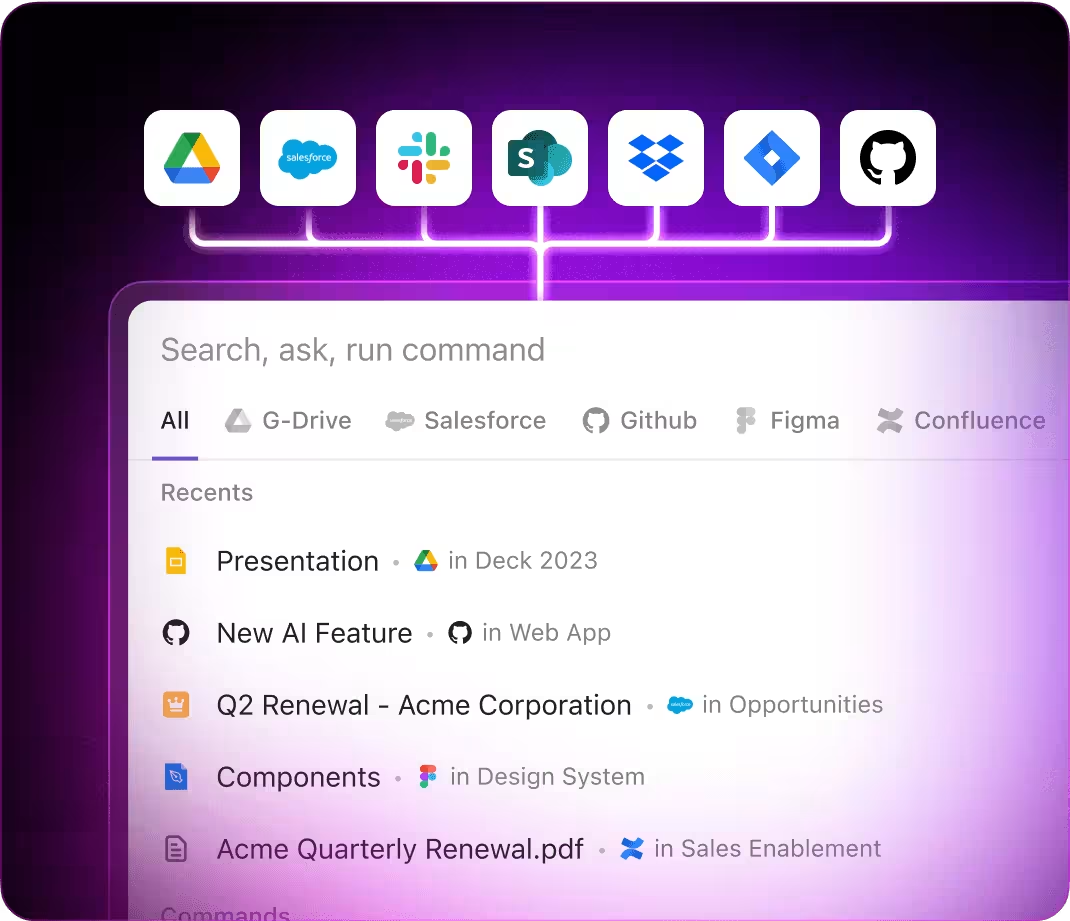
AI Applications
Leading 3 Applications of AI Prompts in Crafting Status Reports
Enhance clarity, boost precision, and reveal insightful narratives through AI-powered status reporting with ClickUp Brain
Status Reports Made Simple
Gathering updates often means juggling emails and scattered notes. ClickUp Brain organizes these into clear, concise status reports—right within ClickUp Docs.
Leverage ClickUp Brain to:
- Convert fragmented progress notes into polished report templates
- Produce fresh insights using previous project data (through context-sensitive AI writing)
- With Brain Max, instantly access historical reports, team feedback, and project files to inform your next update.
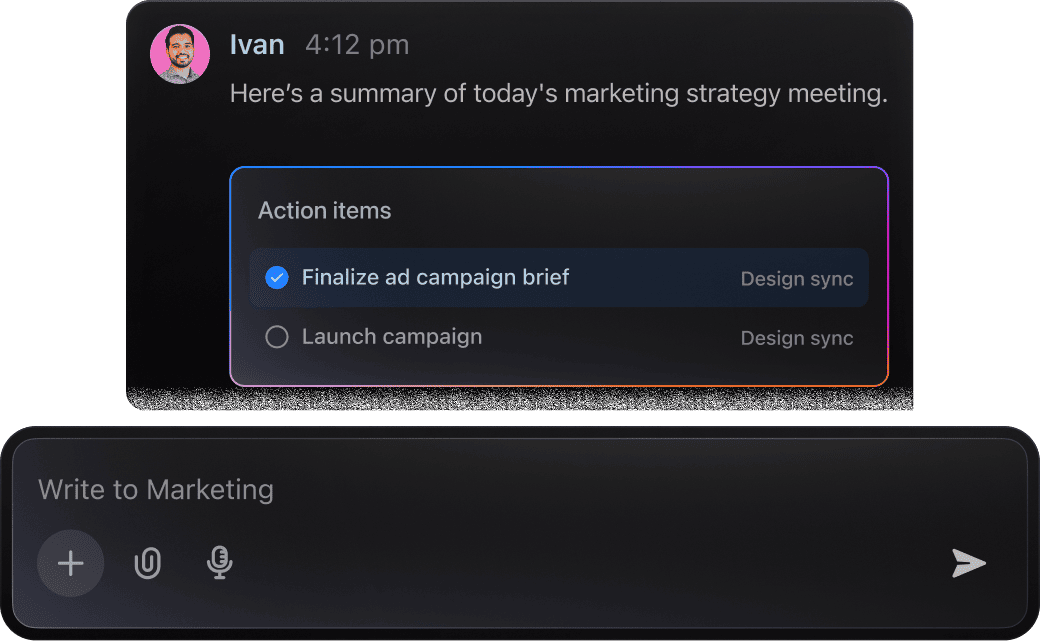
From Design Concepts to Engineering Execution
Engineering teams handle complex notes and detailed reviews daily. ClickUp Brain transforms these into clear action steps, highlights potential challenges, and crafts precise follow-up tasks.
Leverage ClickUp Brain to:
- Condense in-depth technical conversations captured in tasks or Docs
- Convert detailed design annotations into actionable engineering assignments
- Automatically generate issue logs or transition summaries
- With Brain Max, instantly retrieve past decisions, component analyses, or project discussions throughout your workspace—eliminating tedious searches through CAD documentation.
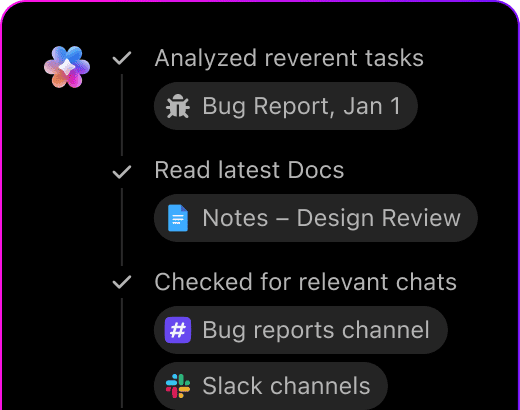
Status Report Automation with ClickUp Brain
Crafting clear and concise status reports often means sifting through scattered updates, emails, and notes. ClickUp Brain simplifies this process by extracting key information and creating consistent, on-brand summaries.
Leverage ClickUp Brain to:
- Analyze meeting transcripts for essential progress points
- Produce status report text tailored to your team's style
- Convert feedback and comments into actionable follow-ups
- Brain Max enhances this by recalling previous project data or similar report formats, even over extended timelines.
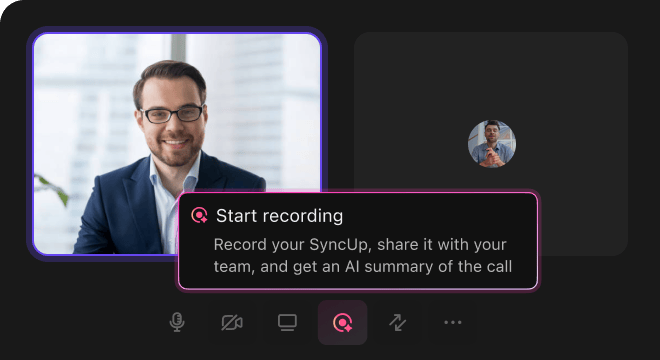
AI Advantages
How AI Prompts Revolutionize Status Reporting in ClickUp
Integrating AI prompts transforms how you manage status reports:
- Kick off updates swiftly: Turn raw data into clear, concise summaries instantly
- Reduce errors: Highlight discrepancies by cross-referencing previous reports and team input
- Keep everyone aligned: AI-crafted summaries and action points ensure your team stays informed
- Make informed choices: Generate insights on project progress and risk factors with ease
- Plan proactively: Uncover trends and forecast outcomes beyond standard reporting.
All these features integrate directly within ClickUp, turning your AI-generated content into actionable tasks, collaborative docs, and insightful dashboards that drive your projects forward.
Prompt Strategies
Crafting Effective Prompts for Status Reports
Clear prompts lead to insightful updates.

Define the project and report focus clearly
Vague prompts yield unclear summaries. Specify details like project phase (e.g., “development sprint 3” or “Q2 marketing campaign”), report type (e.g., “progress update” or “risk assessment”), or audience (e.g., “executive team” or “client stakeholders”).
Example: “Summarize key achievements and blockers for the mobile app launch sprint targeting product managers.”

Use comparative prompts to highlight changes
AI excels at contrasting data points. Use prompts like “compare last week’s vs this week’s metrics” to identify trends, improvements, or regressions in project status.
Example: “Compare task completion rates between sprint 2 and sprint 3 for the backend team.”

Frame prompts around reporting goals
Think of your prompt as the report’s purpose. Instead of generic requests, focus on what the report should achieve:
Example: “Generate a risk summary highlighting potential delays and mitigation steps for the upcoming release.”

Specify the desired output format
Need bullet points, a summary paragraph, or a table of key metrics? Clarify the format to get structured, actionable reports.
Example: “Provide a bullet list of completed milestones and pending tasks for the client update meeting.”
Simplify Status Report Creation with ClickUp Brain
ClickUp Brain goes beyond managing tasks—it's your smart partner for crafting clear, concise status reports every time.





